Tag: metamorphosis’
Summer Changelings
- by KitchenPantryScientist
Summer surrounds us with science. We’ve been catching tadpoles and capturing caterpillars and releasing them as frogs and butterflies. It’s nothing short of amazing to watch these creatures move through a process called metamorphosis, which changes them from one form to a completely different one as they become adults. This is a great survival tactic, since the youngsters and adults live in different areas and eat different things, so they’re not completing for food or space!
You can look for monarch caterpillars on milkweed and swamp milkweed, which you see in the video above. Bring plenty of food home for them to eat as they grow (the plants you found them on.) Tiger Swallowtail Caterpillars prefer a diet of dill! If you have trouble finding caterpillars, plant some milkweed and other butterfly-friendly flowers in your garden! The monarch population is in trouble due to lack of milkweed, which once grew everywhere. Click here for more information raising Monarchs.
We caught tadpoles in a local fountain (with permission, of course) and brought them home to observe. When they became tiny toads, we released them in the same fountain where we caught them. Before catching tadpoles, check local regulations to make sure it’s allowed and ALWAYS return them to the exact spot where you caught them, to avoid the spread of deadly fungi and invasive species! If you can’t return them to the same spot, don’t bring them home! Keep them in water from the source where you caught the them, and never add tap water to their habitat, since chlorine will kill them. Be sure there is a rock for them to crawl onto when they become frogs or toads. They’ll eat water plants and algae from their original habitat, but you can also boil green lettuce in bottled water and chop it finely to feed your tadpole. Release them immediately when they hop out of the water, since it may be difficult to know what to feed them once they’re mature.
Butterfly Season
- by KitchenPantryScientist
met⋅a⋅mor⋅pho⋅sis
| Biology. a profound change in form from one stage to the next in the life history of an organism, as from the caterpillar to the pupa and from the pupa to the adult butterfly |
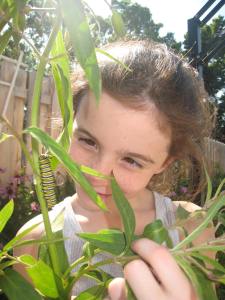
There are few things more magical than watching a caterpillar turn into a chrysalis and then a butterfly. It’s the beginning of butterfly season, and soon you’ll be able to find monarch caterpillars on milkweed. Just this morning, I spotted a Tiger Swallowtail butterfly by the lake. Not only is it fascinating to observe metamorphosis, it is a great opportunity to create some fantastic artwork for your science notebook!
When the weeds in your area start to get big, take a trip to a park, or a farm, or even a weedy lot and search for some milkweed. (See photo below.) Look carefully on the plants, and there’s a good chance you’ll find a Monarch caterpillar like the one my daughter is watching at in the photo at the top of this page. If you find another type of caterpillar, take whatever plant you find it on with you as food. Carefully take the caterpillar and plenty of milkweed and place them in a large see-through container. We used an old plastic pretzel container, but a large jar or Tupperware container would work too. Just be sure to punch air holes! I put the milkweed in a little vase with water to keep it alive, but a friend told me you can put the leaves between damp paper towels and keep them in the fridge, getting them out when you need fresh ones.

milkweed
Last year, I planted butterfly weed, a type of milkweed, in our garden in hopes of getting caterpillars right in our own backyard and it worked! Just plant milkweed or other butterfly-friendly plants this spring and summer if you want a butterfly gardenof your own. It’s a great way to help the butterfly population. Swallowtail caterpillars like dill and I’ve seen caterpillars in my parsley too!
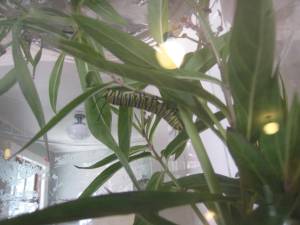
Once you have your caterpillar, all you have to do is make sure it has plenty of leaves to eat. Occasionally, you’ll have to dump out the caterpillar poop, of which there is a surprising amount. Get out your science notebook or just some paper and draw the caterpillar and the milkweed. When it is ready to form a chrysalis, the caterpillar will hang upside down and look like the letter J. Draw the chrysalis, and finally, the beautiful butterfly that emerges! Keep track of how the caterpillar is growing and how long it spends as a crysallis before hatching.
A few years ago, my kids and I were lucky enough to see the caterpillar turn into a chrysalis. It only takes a few seconds and is easy to miss, but it is truely amazing. If you’re lucky and patient, you may see it too. Here is a link to a short video showing what happens.
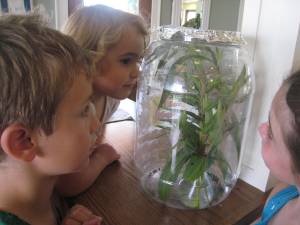
There’s nothing quite like taking the lid off your butterfly house and watching a Monarch soar away into the sky.
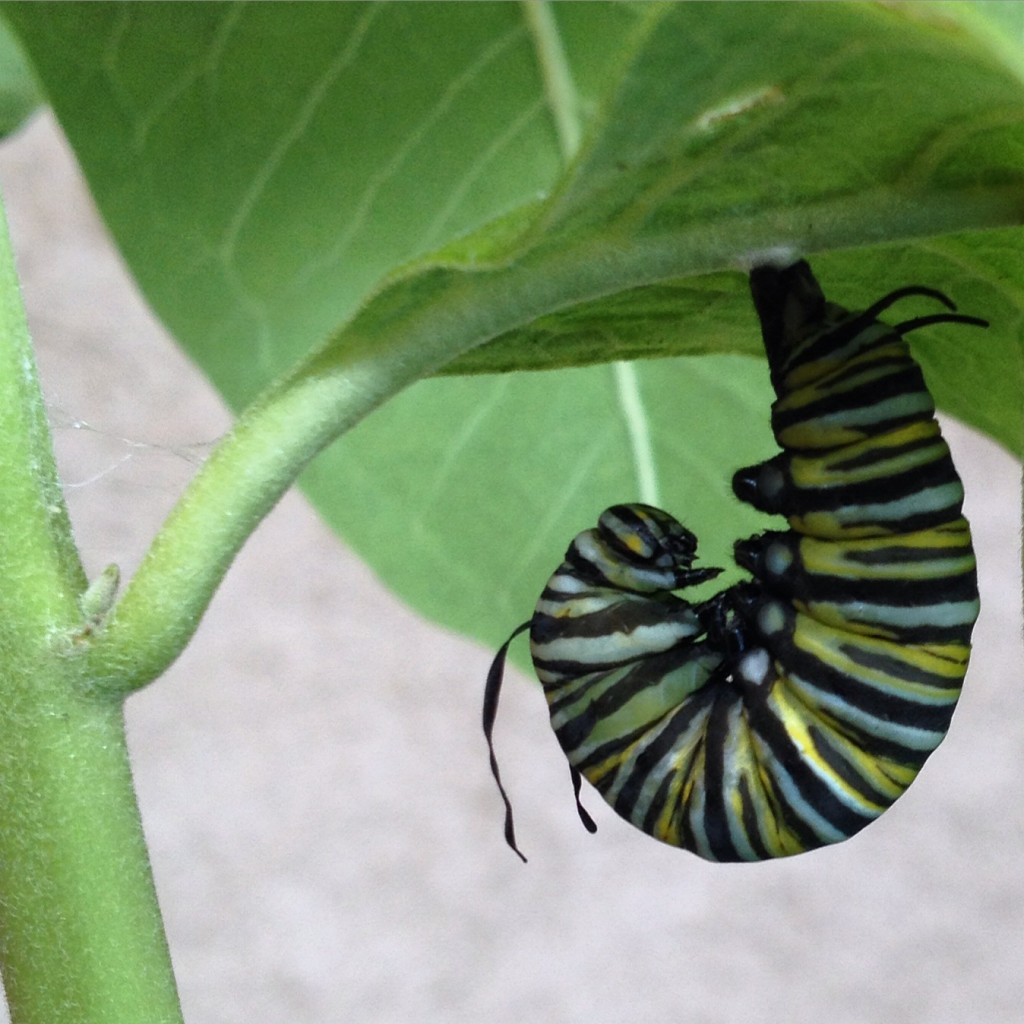
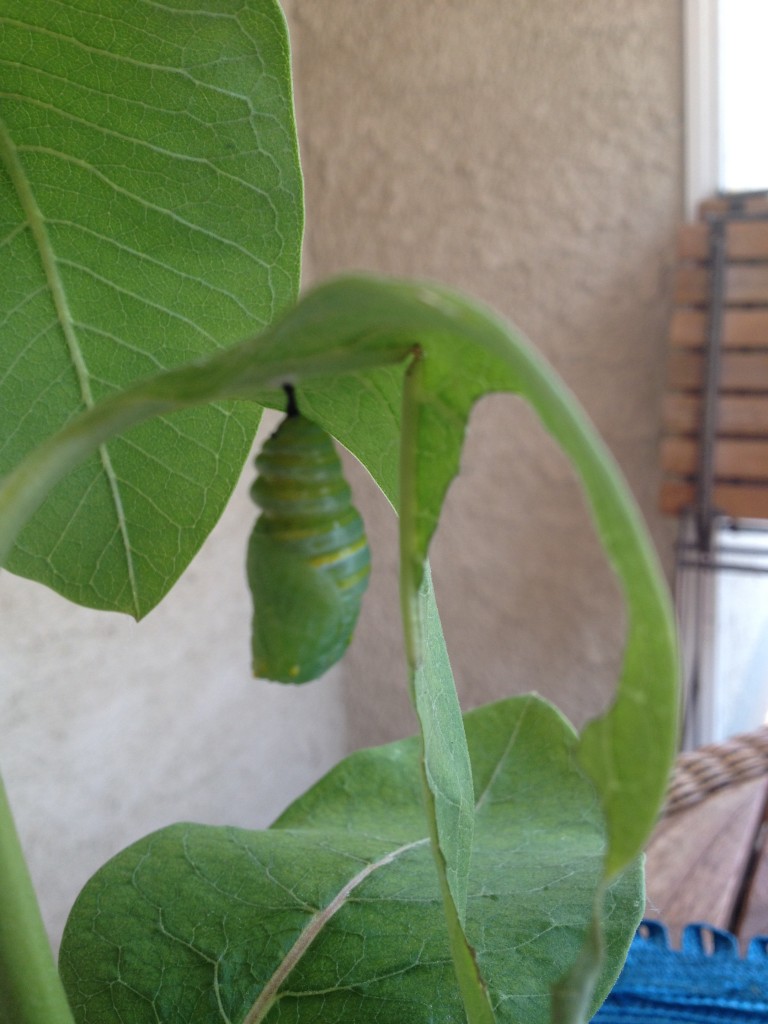
![IMG_6821[1]](https://kitchenpantryscientist.com/wp-content/uploads/2015/07/IMG_68211.jpg)